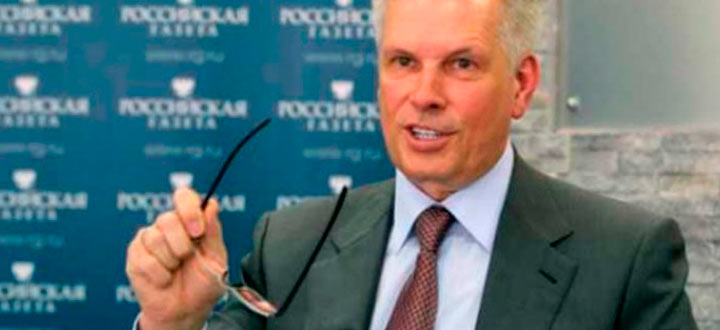
Russia’s food czar goes shopping in South America
Sergei Alekseyevich Dankvert has been a very busy man this week.
Head of Russia’s Federal Service for Veterinary and Phytosanitary Control, the 59-year-old Dankvert is in effect his country’s food czar. As such, he is arranging for a steady, massive supply of food to be imported into Russia now that the Kremlin has banned the importation of food from several major sources in the West. (For background in Progreso Weekly, click here.)
Dankvert’s Moscow-based agency, which monitors animal and vegetable importations, is known by the tongue-twisting name “Rosselkhoznadzor.” A reading of its agenda for today Thursday (Aug. 7) is quite revealing.

— On this day, Dankvert met with Argentine Ambassador Pablo Anselmo Tettamanti and told him that Russia is interested in importing beef, pork, poultry, cheese, milk powder, butter, seafood, and a wide range of fruits and vegetables.
Specifically, Dankvert mentioned black hake and corvina fish, for distribution to restaurants.
Plans were made to arrange meetings of Russian food importers and Argentine exporters at the next summit of the Intergovernmental Committees on Trade (ICT), Sept. 15-16 in Moscow, and the World Food agricultural exhibition, which will be held in Moscow simultaneously.
Ambassador Tettamanti, who assumed his post in March, told Dankvert that Argentina is ready to begin supplying Russia immediately, without waiting for the ICT summit.

— Dankvert also met Thursday with Ambassador Aníbal Cabral Segalerba of Uruguay, who expressed his government’s willingness to supply animal and vegetable food products to Russia in exchange for agricultural technology and equipment.
Dankvert outlined Russia’s needs as Uruguayan beef, pork, lamb, seafood, dairy products, citrus fruits and vegetables. The export of live cattle was also mentioned.
Segalerba informed Dankvert that Uruguay’s minister of Agriculture, Tabaré Aguerre Lombardo, will visit Moscow in September, at which time a formal agreement on cooperation may be finalized.

— Next on Dankvert’s list of visitors was Ecuadorean Ambassador Patricio Alberto Chávez Zavala, with whom Dankvert discussed increased exports of seafood, dairy products, fruits, vegetables and flowers. Dankvert said that the direct delivery of flowers, bypassing European middlemen, is of particular interest to him.
— Finally, at a meeting with Chilean Ambassador Juan Eduardo Eguiguren, Dankvert said that Chile can dramatically increase its exports to Russia, which currently include meat, dairy products, fish, fruits and vegetables.
Thus, he said, Chile’s exports of fish (53,000 tons last year) could double or triple. Its exports of shellfish (3,000 tons) could rise to 15,000 or 20,000 tons.

There are great opportunities for growth in the sale of Chilean apples to the Russian market, Dankvert said, given the difference in the seasons of the year between the northern and southern hemispheres. Russian consumers could get fresh apples from Chile in the cold days of December.
Eguiguren told Dankvert that Chilean exporters can swiftly increase their supplies to Russia and stressed Chile’s abundant harvest of potatoes, an important staple on Russian tables.
As the other Latin American ambassadors had done, Eguiguren promised to give Dankvert an updated list of exporters in his country who would be interested in supplying comestibles to Russia.
*****
UPDATE: On Friday (Aug. 8), Dankvert met with Peruvian Ambassador Gustavo Otero Zapata, who offered the services of 18 Peruvian fish-processing plants to supply Russia’s needs.
Dankvert told Otero that Russia will also need dairy products such as powdered milk, condensed milk, cheese and yogurt.
Citrus fruits, nuts and vegetables are also on the shopping list. Peruvian grapes seem popular in Russia, which imported 20,000 tons last year and 14,000 tons so far this year.
[The Washington Post on Friday (Aug. 8) published a detailed appraisal of the negative effect of this ban on U.S. industry. To read it, click here.]
[Photo above of Sergei Alekseyevich Dankvert, head of Russia’s Federal Service for Veterinary and Phytosanitary Control.]


